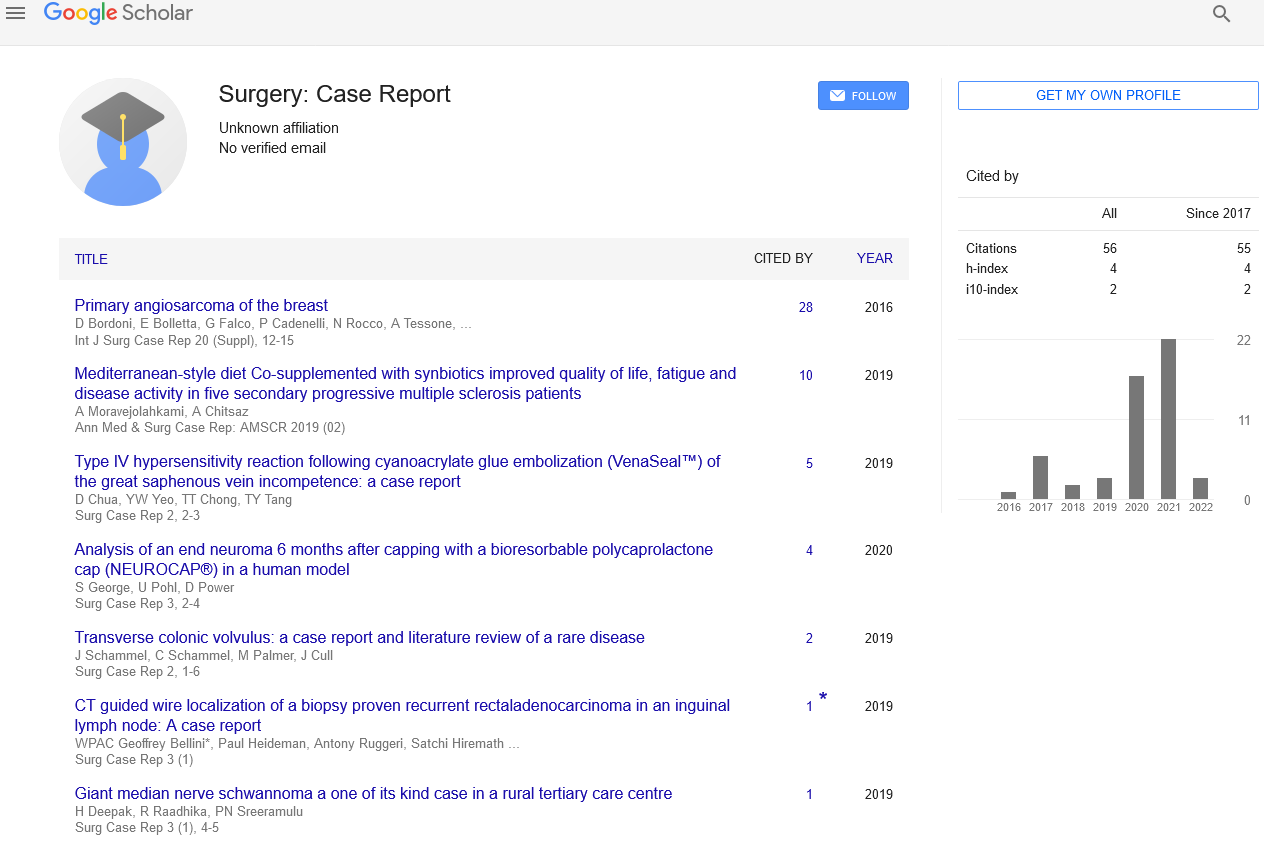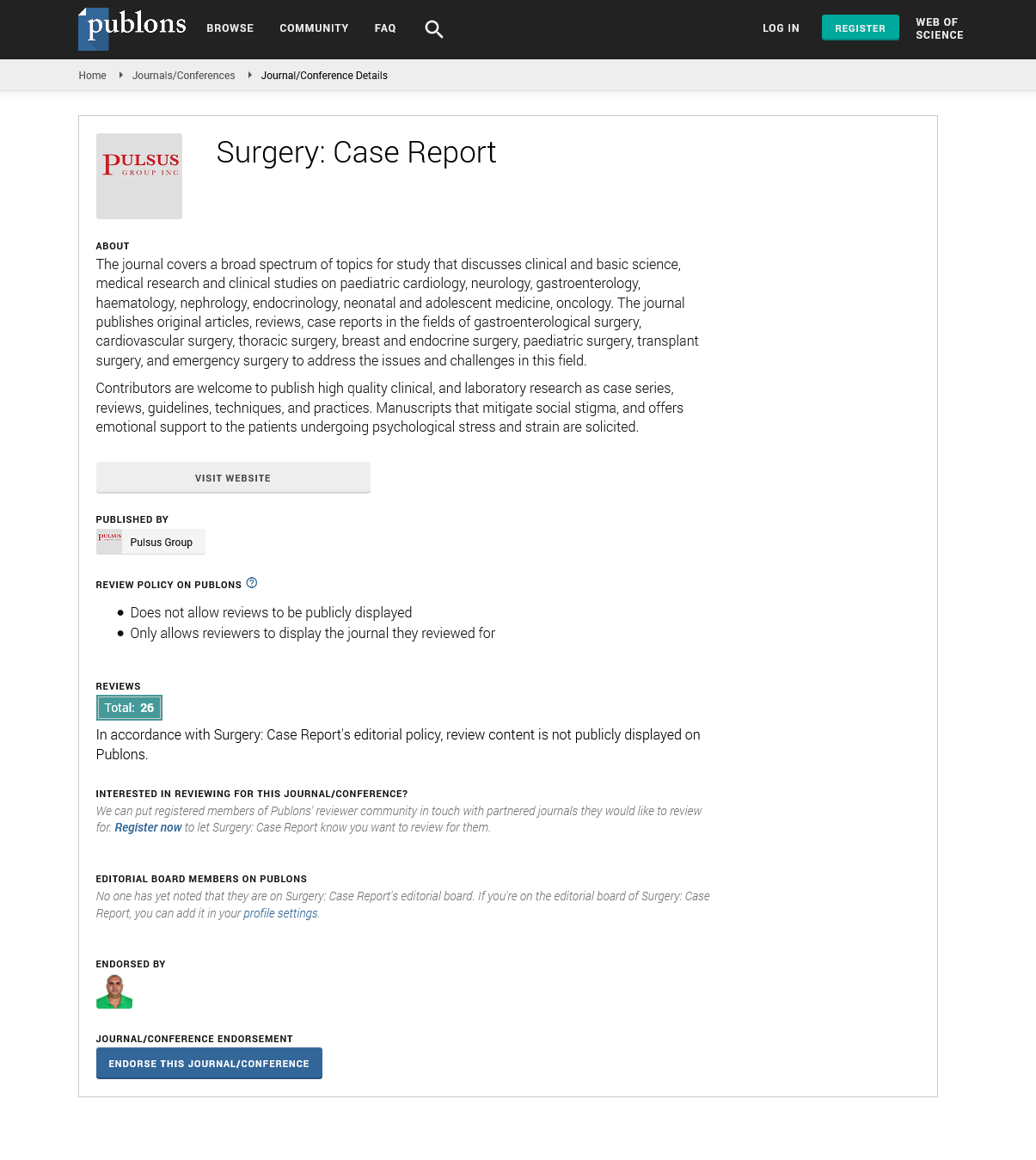Short Communication on Fetal Surgery for Congenital Heart Disease
Received: 06-Nov-2020 Accepted Date: Nov 23, 2020; Published: 30-Nov-2020
Citation: Neelima K. Short Communication on Fetal Surgery for Congenital Heart Disease. Surg Case Rep 2020;4:3.4.
This open-access article is distributed under the terms of the Creative Commons Attribution Non-Commercial License (CC BY-NC) (http://creativecommons.org/licenses/by-nc/4.0/), which permits reuse, distribution and reproduction of the article, provided that the original work is properly cited and the reuse is restricted to noncommercial purposes. For commercial reuse, contact reprints@pulsus.com
Short Communication
The heart is one of the first structures to develop, forming by week eight of gestation. In congenital heart disease, an abnormality in the heart’s structure, in the way it beats, or both, prevents it from functioning properly
in the womb. Learn more about abnormal heartbeats.
Congenital heart disease ranges in severity, depending on the type and location of the structural defect. Although congenital heart disease is usually treated after birth, in a small number of cases, the defect is so serious that treatment after birth isn’t an option, or if so, will require multiple open-heart surgeries that can result in lifelong limitations.
Diagnosis
Congenital heart disease is diagnosed through fetal echocardiogram, which allows for detailed examination of the structure and function of the heart. Echocardiography also helps to determine whether the structural defect can be repaired after birth or if fetal intervention is necessary.
What can happen before birth?
The structural heart defect has finished forming before congenital heart disease is detected-often before a woman knows that she is pregnant. In rare cases, a structural defect can be seen to develop, or worsen, later in pregnancy. The following are some structural defects:
• Critical aortic stenosis: severe obstruction or narrowing of the aortic valve, between the left ventricle and the aorta. This has been linked to hypoplastic left heart syndrome, in which the left side of the heart is underdeveloped and cannot adequately supply the body with oxygen-rich blood.
• Critical pulmonic stenosis: obstruction or narrowing of the pulmonic valve, between the right ventricle and the pulmonary artery. This can damage the right side of the heart, preventing proper blood supply to the lungs.
• Restrictive atrial septum: early closure of the opening between the left and right atriums. If this closes before birth, oxygen-rich blood cannot reach the aorta and the fetus may suffer.
Precautions taken before birth
Most cases of congenital heart disease that are caused by structural defects cannot be treated before birth. Close monitoring is necessary to determine if the condition affects the fetus, or will only affect the baby after birth. Close prenatal follow-up includes counseling and preparation for the newborn period, in which your doctors will discuss the anticipated severity of the condition at birth, which procedures and treatments will be necessary, and if and when transfer to a specialized heart surgery center is necessary. In rare cases of aortic or pulmonary stenosis, a fetal image-guided procedure may be necessary to open or enlarge the obstructed valve. This procedure may prevent the development or, at least, decrease the severity, of HLHS or hypoplastic right heart syndrome.
Long-term outcome
The long-term outcome depends largely on the defect and whether other non-cardiac defects are present. Most structural heart defects can be treated at birth with excellent outcomes.






